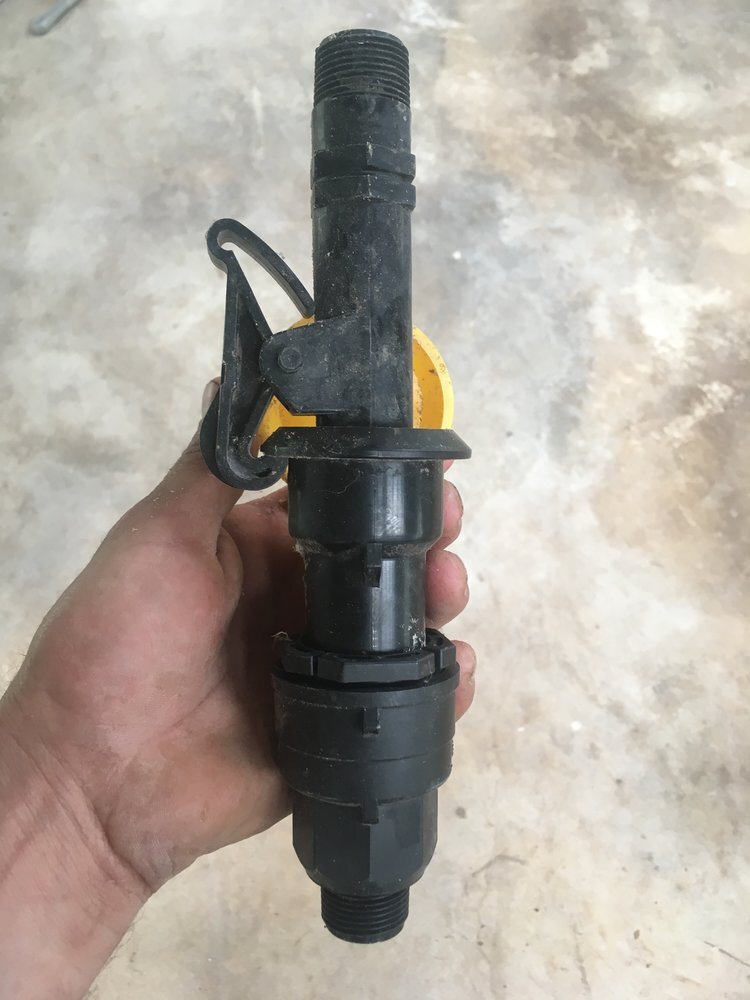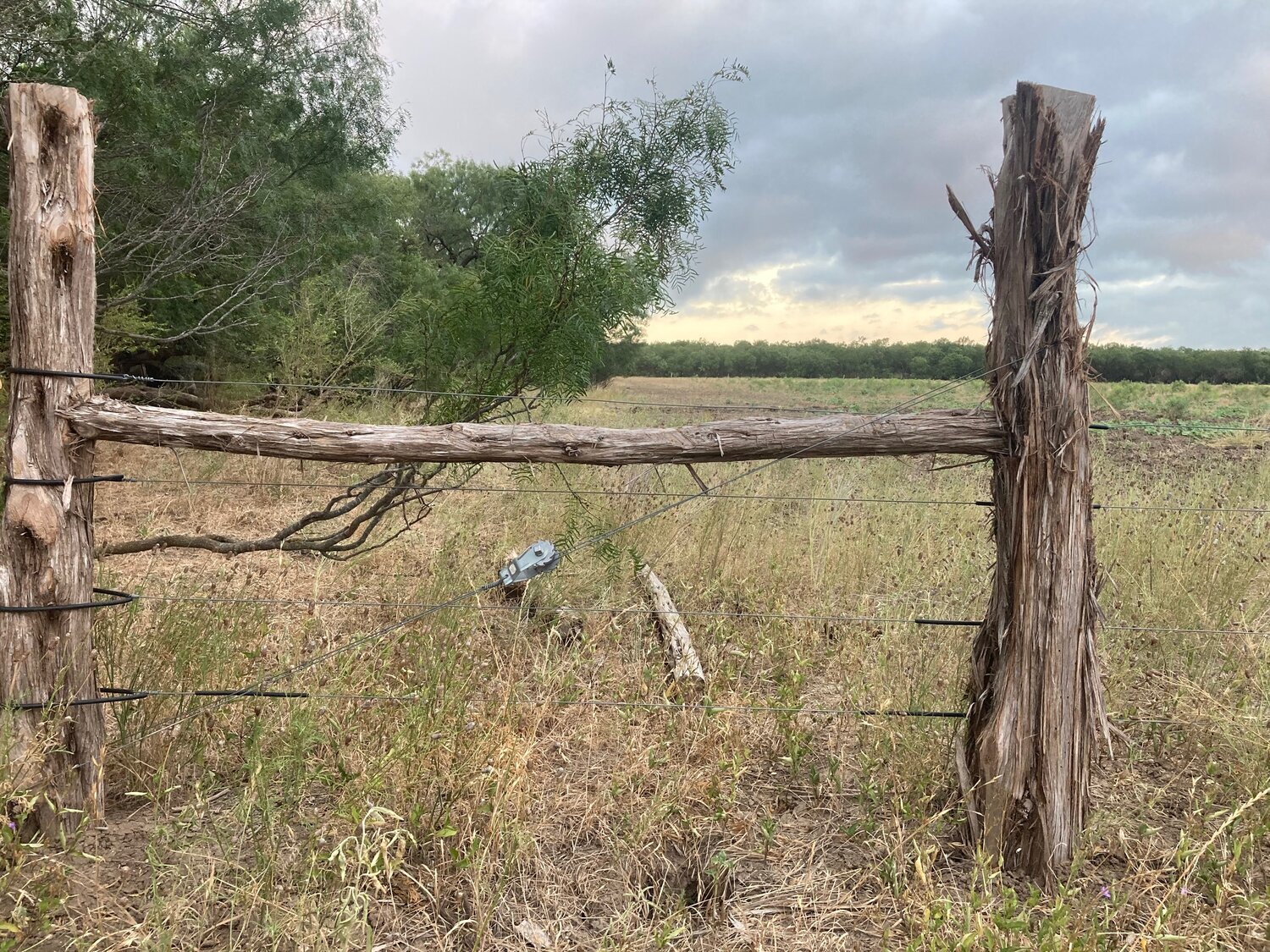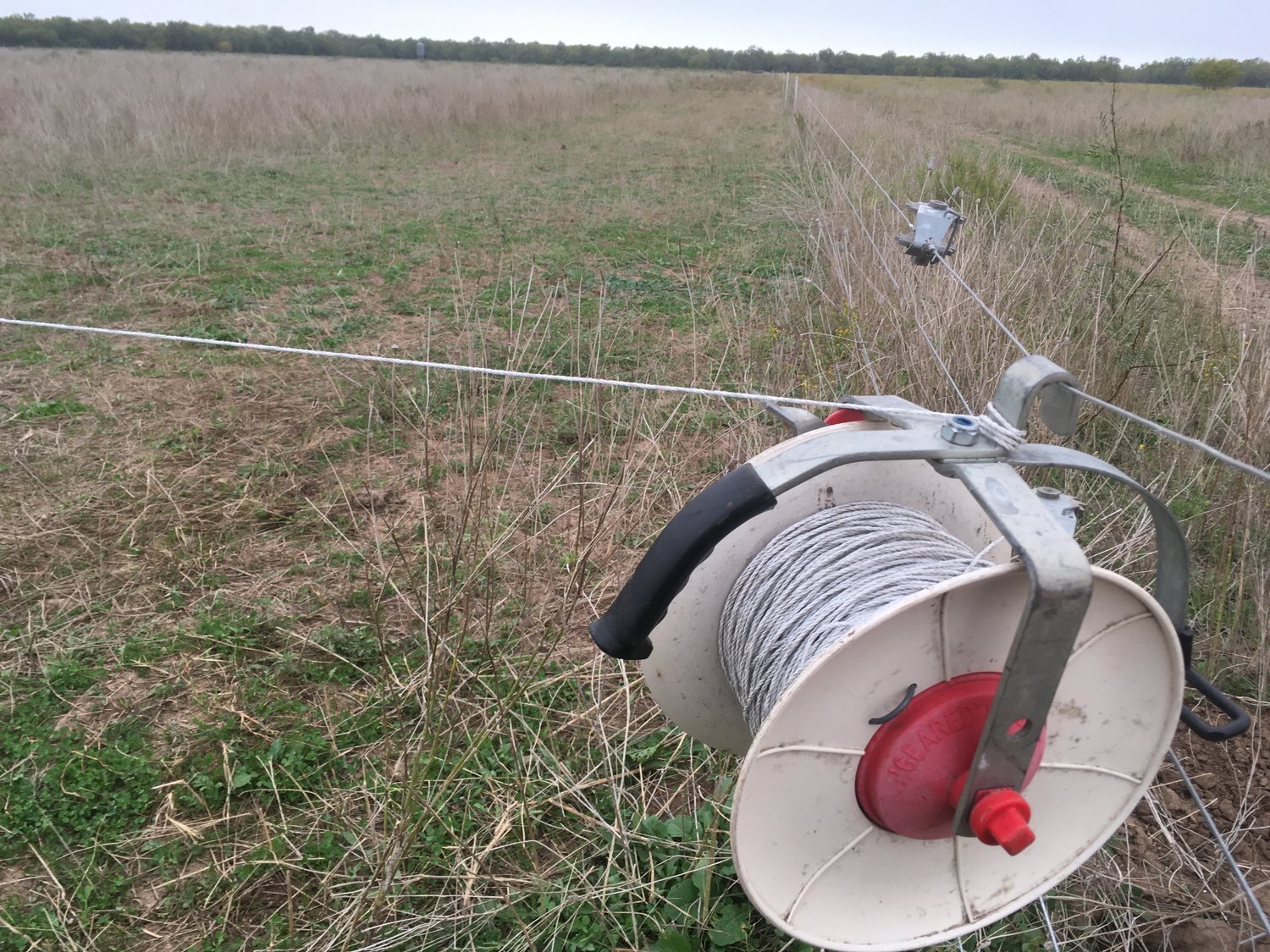My favorite tools for rotational grazing
Portable water is critical to any regenerative grazing system. Our Grazing Lands project at Pajarito Ranch in Pandora, Texas has over 200 individual paddocks for frequent herd movement and optimal rest periods. It wouldn’t be feasible to put a permanent trough at each one. We strategically designed the system with schedule-40 polypropylene pipe that is run underground to service our pastures and paddocks. Risers are positioned at calculated distances along the pipeline to optimize our grazing system. From these risers we utilize a portable trough that moves with the cattle herd. A rubber trough works best and has durability. Unfortunately, they are heavy to lug around. With big herds of several hundred to a thousand head a 500 gallon trough is ideal depending on the water volume being delivered to the trough. I prefer a cost-effective, light-weight poly tank for that situation. The brand is insignificant. I like to add a 4” Banjo valve to the trough so we can drain it quickly. I use rubber, reinforced radiator hose to connect the trough to the underground valve. It handles really high PSI and hot temps we experience here in South Texas. Other graziers use air and garden hoses, but these simply don’t hold up very long in the harsh sunshine. Here are a few other parts that I think are currently the best on the market:
Jobe mega flow water valve. This water valve is darn near fail proof and provides good volume. I have had one in service for over 6 years, used every day and has yet to fail me. Find me another water valve that can do that!
Plasson quick-coupler valve. These quick-coupler valves are awesome. Mind you if you have a 3” line coming into your trough these won’t work. They don’t get bigger than 1”. We have found that ample to service a thousand head.
Banjo cam lever couplers. These are handy for connecting/disconnecting your hose from the quick-coupler valve to the trough. When your constantly on the move with a herd of cattle efficiency is important.





A key tool for regenerative grazing is portable (modular) electric fencing. There are a myriad of brands and tools out there to wade through.
Powerflex polybraid. This is the best portable/temporary electric fence wire on the market in my opinion. It has excellent strength, carries a current long distances and is relatively visible. We use polybraid on our reels and on our RangeWard reels that hold about 1.5 miles of polybraid.
Gallagher geared reel. To get started I suggest just finding a reel that you like. I started off the first decade with O’Brien geared reels and loved them. I finally bought a Gallagher reel to test out and it is now my preferred reel. The ergonomics are significantly better and I really love the extra protection it gives your hands.
Gallagher ring top post. This are a little pricey compared to your cheaper pig tail posts, but they have several huge advantages - the ring top head of the post is fully insulated from the steel body, a much better foot plate, and the head doesn’t tangle. On your traditional pig tail posts the steel body lies just beneath the pig tail, insulated by a layer of rubber. Inevitably this wears through and shorts out your fence. We have hundreds of these old pig tail posts and we are slowly replacing them as they wear out. The only improvement needed is a little stiffer steel and a sharpened spike for better ground penetration.
Speedrite X6 dual purpose charger (portable charger). This DC charger is perfect for long stretches of electric fence. At Pajarito Ranch it’s not uncommon for us to have a mile or two of temporary fence on a paddock. It’s easily portable on a small platform or trailer. Make sure you size the battery, solar charger and charge controller properly.
Speedrite S1000 solar energizer. We use these super portable solar energizers all of the time. We have found with well-trained cattle this is often all you need.
Range Ward Power Arm. If your grazing livestock at scale on large acreage this tool is a must have. Range Ward offers a variety of products for grazing livestock on large landscapes. The Power Arm has been a game changer for our Grazing Lands operations. We simply couldn’t do it without this tool. It offers a solution to your traditional hand reels. The Power Arm is designed to simplify putting out and retracting fences – electrically! Use with a quad, side by side or pick up and have a great fencing tool. No more hand reels and tired arms!
Zammr handle. I don’t usually mention the small things like handles and other hardware. The Zammr handle is one of the best keep secrets. It’s the only handle on the market I know of with both a dead and ‘hot’ hook. It’s nice to keep a few regular dead handles on hand for various uses, but the Zammr handles are worth every penny.
Sometimes a ranch has little to no permanent interior fencing. I gave up builiding barbed wire fences many years ago. They are rarely, if ever cost effective. For cattle a single strand, hi-tensile fence is all that is needed. It’s a low-cost solution that works just as good as an old-fashioned barbed wire fence. I use them for leader wires to power my temporary fences. Design is important, so I typically recommend to not build permanent fences for the first year. Use temporary fencing until you get to know the land and how the livestock utilize the pastures. It will save you a lot of headaches down the road to take your time disigning and installing permanent electric fences. Also, having some permanent infrastructure is sometimes necessitated. Beyond the tools listed below, my major suggestion is don’t use any steel posts on your fences. I prefer cedar, but use whatever long-lasting post is available to you. Here are a few of the tools I think are essential build an effective permanent electric fence:
180 KSI, 12.5 guage high-tensile wire. This wire can be purchased through almost any farm or ranch store. My local feed store adds it to their fencing orders and it saves me a lot of money on shipping. The wire comes in 4000’ rolls and it is heavy. I prefer to hand-tie my wire versus crimping and that’s my number one reason for using this wire. Anything over 180 KSI is very difficult to hand-tie. Purchase Class-3 galvanized wire and it will last a life time. If you can get it Zinc coated that’s even better! I don’t see any reason this wire shouldn’t last 50 years or more.
Pasture Pro line posts. There are a lot of graziers who prefer to use fiberglass. The Pasture Pro is a line post that’s made of a wood-vinyl composite. If everyone built there fences with fiberglass posts we would have a massive waste disposal problem on our hands. Fiberglass is nasty to manufacture and virtually impossible to recycle at the end of it’s life. I’ve been using Pasture Pros for a long-time and have been very happy with them. The downside is they aren’t as strong as fiberglass. Properly installed they should last a really long time. I have some that are over a decade old and show no signs of deterioration.
Spring gate- 24’. As I have said before I don’t typically mention hardware. I am just like anyone else - I don’t like opening gates. The beauty of regenerative grazing is your cattle are in one small pasture on the ranch and the rest is wide open. In permanent fence installations these spring gates are golden. They are easy for anyone to open and close. This little trick will save you a few headaches - when the cattle are in the pasture we tie flagging to the gate to make it easier to see and less likely that someone will drive through it.



There are a handful of tools I deem essential for any grazier using electric fence. Here is the quick list of my essentials:
Gallagher wire payout. This payout, sometimes referred to as a spinning jenny, is the best on the market. The key is it’s well-built. I’ve used several other payouts over the years and they are all on the junk metal pile bent out of shape.
8” side cutters. These side cutters are an amazing fencing tool. The ergonomics and usability are unmatched. They are a bit pricey, but well worth it.
EzePull 4-in-1 fence tool. If your using crimps on your permanent fence installations this fencing tool is a must have. I’ve used other crimpers and none compare to the ease of the EzePull.
Channellock linemen’s pliers. Call me old-fashioned, but I still carry a pair of linemen’s pliers in every truck and RTV we own. I grew up fencing with these pliers, a hammer and bucket full of staples.
The last key tool on my list is PastureMap. I’ve been a user almost since their inception. I wrote a blog a few years back that’s now a bit outdated. In the early days there were some flaws, bugs and a major lack of customer service. With the recent acquisition by SoilWorks Natural Capital most of that has been resolved and the software is getting better every day. We utilize PastureMap every day in our ranching operations. It helps us plan our grazing chart, plot daily moves, plan infrastructure, store critical data and so much more. This tool is invaluable to every grazier.
There are always new tools coming onto the market. This list of my favorite tools has been tried and true for more than a decade. It’s never been easier to implement a regenerative grazing system with all of this great technology. The reality is it doesn’t take much to be an efficient regenerative grazier. There is beauty in the simplicity. Questions or comments please feel free to post below or send me an email to travis@grazinglands.com
Thanks for reading!
,Travis Krause
CEO & Founder of Grazing Lands
